This cool-season perennial herb is easy to grow and surprisingly long-lasting. It’s also very versatile, at home both in the garden and in a container and, provided it gets enough sun and regular water, happy either indoors or outside. Chives, sometimes called garden chives to distinguish them from garlic chives, are the more familiar variety for most gardeners and cooks, but garlic chives or Chinese chives are an interesting choice if you want something with a bit sharper flavor. Both thrive under the same conditions, though garlic chives might be a bit too large for indoor gardening.
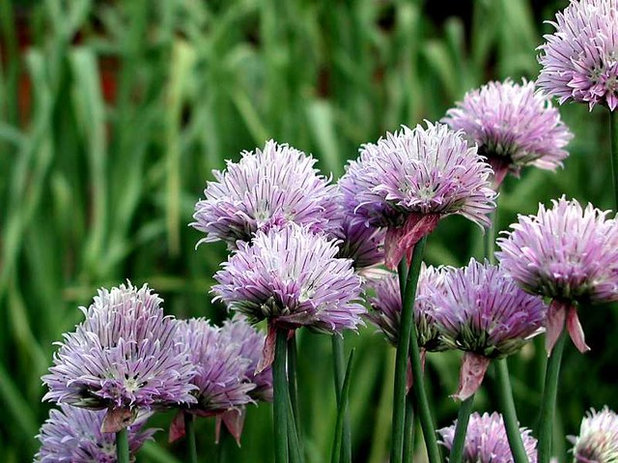
Missouri Botanical Garden
Chives (
Allium schoenoprasum) are usually grown for their tubular stems which resemble green onions, but the purple to purple-pink flowers that appear in spring and into summer are equally edible. The plants reach to between 12 and 18 inches tall, and their clumping growth makes them especially effective in edible landscapes as accent plantings or for swaths of color.
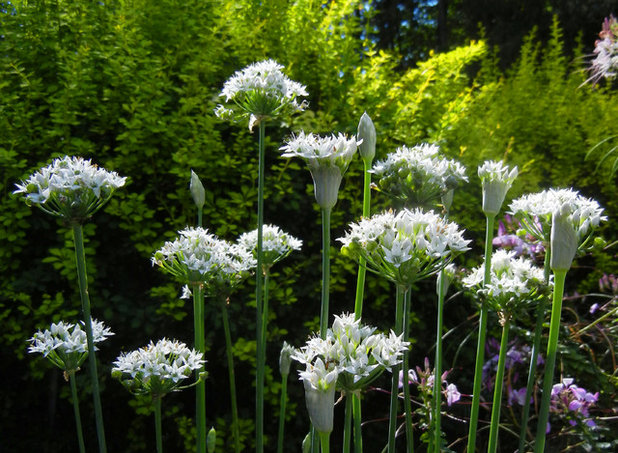
Creative Design by Lauran LLC
Garlic chives (
A. tuberosum), as the name implies, have a more pronounced and garlicky flavor than garden chives. They’re also slightly taller, reaching 2 feet, with flatter stems, and they produce white or mauve blossoms in summer.
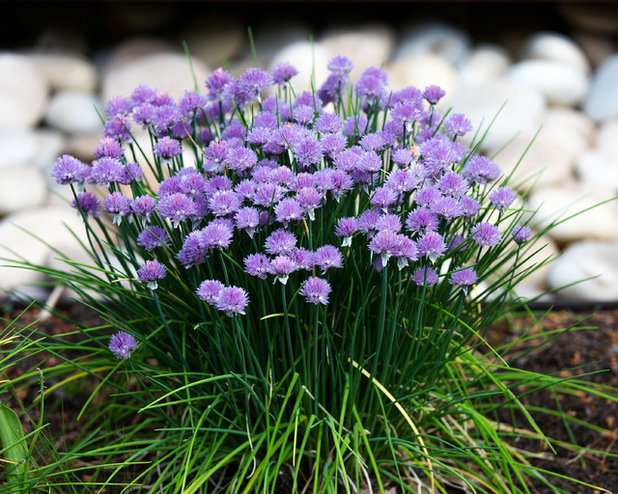
Natalie DeNormandie
Light requirement: Full sun is best. Both types need at least six hours of sunlight each day.
Water requirement: Regular water; don’t let dry out
Prime growing season: Spring and summer, although they can be grown year-round in warm-winter climates
When to plant: Early spring when the danger of frost has passed and the soil temperature has reached 60 to 70 degrees Fahrenheit (15 to 21 degrees Celsius). Start indoors about eight to 10 weeks prior to the last frost date in areas where winter lingers. You can also plant in fall in warm-winter climates.
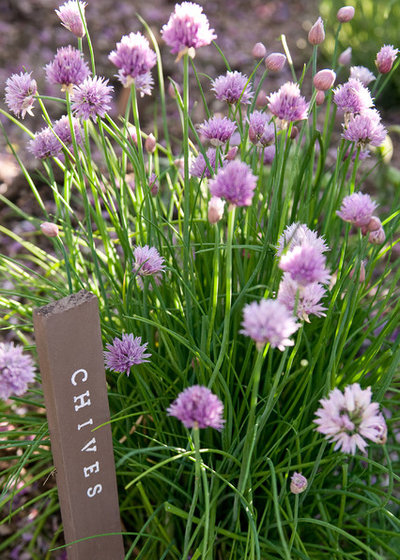
Lucy Call
Planting notes: Choose a spot in full sun with good drainage and rich soil; amend the soil before planting to provide the best start. Sow seeds about ⅛ to ¼ inch deep and 4 to 6 inches apart. Keep the area consistently moist as the seeds germinate.
If you’re planting in a container, it should be at least 12 inches wide and 6 inches deep.
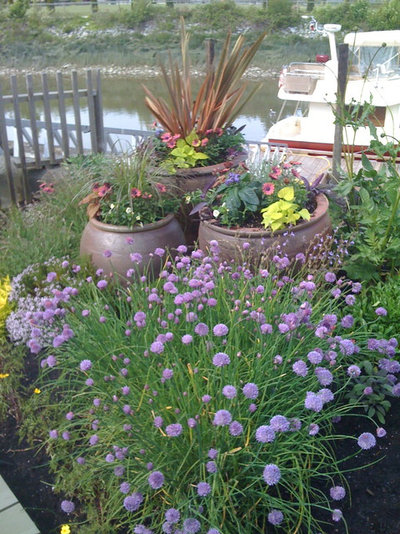
Glenna Partridge Garden Design
Care: Keep the soil consistently moist; mulching around the plants will help prevent the soil from drying out. Chives are generally free of pests and disease. If growing indoors, keep the soil evenly watered and provide sufficient sunlight. Cut out any yellowed stems.
Divide the plants every few years by digging up the entire clump, separating it into smaller units and replanting. Chives also self-sow readily — you may find volunteers all over your garden.
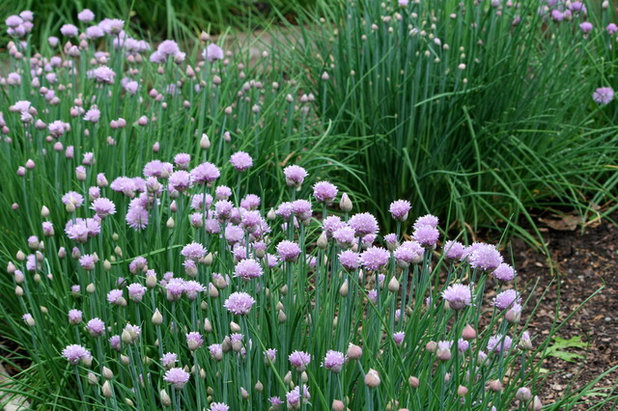
Acer Landscape Services
Harvest: Chives are ready for harvesting a month after you set out transplants and two months after you sow seeds. You can also pick the blossoms as they appear.
For best results, cut whole stems from the outside in. After the first year, you can also cut back an entire clump every few months to encourage regrowth.

Portico Design Group
How to use it: Although garden chives might best be known as a garnish for the sour cream topping a baked potato, they also are great for flavoring soups and sauces, tossing on salads, incorporating into egg and fish dishes or herb butters, and using as a substitute for green onions. The edible flowers can be used to flavor vinegar or snipped over salads.
Use garlic chives when you want a garlic flavor but not the pungency of garlic itself.
Freeze chives for future use. While they can be dried, they tend to lose their flavor quickly.
More: 11 Essential Herbs for Your Edible Garden





